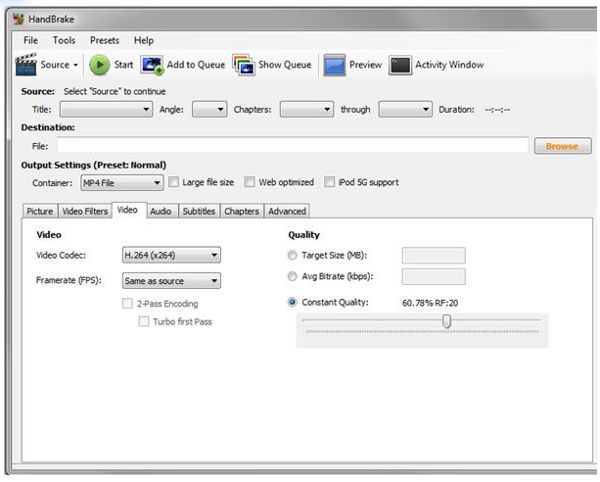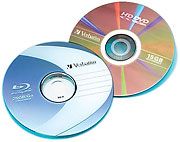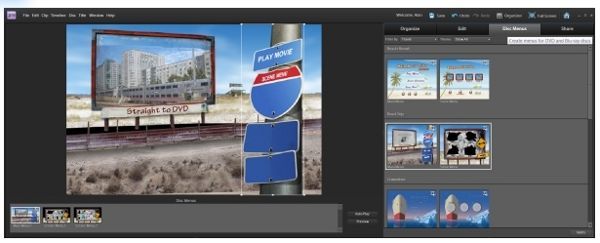Windows media codec 9 что это
Все что нужно знать о видео кодеках и контейнерах, статья. Портал «www.hifinews.ru»
Сохранить и прочитать потом —
Сегодня, кажется, все стремятся стать кинематографистами. Люди используют для видеосъемки самые различные гаджеты и девайсы, включая мобильные телефоны, цифровые фотокамеры, портативные и профессиональные видеокамеры. А последнее поколение цифровых зеркальных фотокамер позволяет записывать видео с поддержкой высокого разрешения.
Чтобы научиться снимать хорошее видео, потребуется приложить определенные усилия, но все становится еще более сложным, когда вы захотите во всей красе продемонстрировать свой шедевр другим людям. Может быть, вам нужно загрузить его на YouTube, может вы собираетесь записать свой Blu-ray или DVD диск, возможно, захотите загрузить видео на мобильный телефон или планшетный компьютер.
Разобраться в том, какой кодек и контейнер лучше подойдет для создания вашего видеошедевра порой достаточно сложно. Помочь в решении этой проблемы сможет представленный далее материал.
Какая разница между кодеком и контейнером?
Начинающие пользователи часто бывают озадачены, когда пытаются выяснить разницу между кодеками и контейнерами. Сейчас слово Кодек стало чем-то общеупотребительным, а изначально термин являлся сокращением от понятия КОмпрессор-ДЕКомпрессор. Что же делают кодеки?
Они принимают цифровые медиа данные и либо сжимают их (для передачи и хранения), либо распаковывают для просмотра и перекодирования. Каждый кодек использует определенный метод кодирования и декодирования цифровых данных.
Несжатое (англ. raw означает необработанное или часто говорят « сырое») видео и аудио требует для хранения огромного дискового пространства. Несжатое видео высокой четкости формата 1080i, записываемое со скоростью 50 кадров в секунду, съедает до 410 гигабайт в час. Аудио с CD дисков, довольно устаревшее по современным стандартам, звучит около 74 минут при емкости диска 680 мегабайт. Однако, восьмиканальный звук, кодируемый с 24 битным разрешением, потребует уже 16 мегабит в секунду, или несколько гигабайт в час. Даже возможностей широкополосного соединения с интернет порой не хватит, чтобы послушать музыку в полном аудио разрешении. Вот почему цифровые видео и аудио записи должны быть сжаты для передачи и хранения.
После того как медиа данные ужаты в разумные пределы, они должны быть упакованы для транспортировки и последующего отображения. Для этого используются форматы-контейнеры, выполняющие роль «черного ящика», наполняемого различными медиа-форматами. Хорошие форматы контейнеров могут вмещать файлы, сжатые разными кодеками.
Давайте разберемся с типами кодеков.
Общее понятие о кодеках
Если вы пообщаетесь с людьми, которые занимаются видеообработкой или посетите соответствующие веб форумы, то будете, так или иначе, причастны к, порой бурным, дебатам о том, какой кодек лучше. В действительности, эффективность любого кодека во многом зависит от используемого режима сжатия и типа обрабатываемых видеоматериалов. Так что стоит рассматривать различные кодеки и с учетом их конкретного использования и особенностей сжимаемого материала. Далее в основном рассматриваются видео кодеки, но в разделе, посвященном контейнерам форматов, упоминается и об использовании аудиокодеков.
Ввод и архивирование видео
Большинство устройств современной бытовой электроники получает контент в каком-либо уже сжатом формате. Как правило, только профессиональные видеооператоры работают с несжатым HD видео. Конечно в идеале, если это возможно, при наличии очень емкой системы хранения, видеоархивы нужно хранить в оригинальном формате съемки, потому что при этом обеспечивается максимальное качество. Перекодировка видео из одного типа сжатия в другой может привнести едва различимые искажения, которые могут снизить качество изображения. (Подобные погрешности минимизирует хорошее программное транскодирование.) Сегодня предлагается множество кодеков, с определенной специализацией. С большинством из них обычный пользователь может никогда и не столкнуться. Следующий раздел посвящен кодекам, как системам сжатия/декомпрессии, используемым в составе специального программного обеспечения, которое позволяет кодировать или перекодировать видеофайлы.
x.264/ MPEG-4 AVC (Advanced Video Coding). Этот наиболее распространенный кодек используется в современных цифровых видео- и фотокамерах, в которых результаты съемки сохраняются в виде файлов на встроенных жестких дисках, картах памяти, и т.д.
MJPEG (Motion JPEG). Это более старый формат, используемый некоторыми цифровыми камерами и видеотехникой прежнего поколения. Он был разработан теми же специалистами (Joint Picture Experts Group), которые занимались еще ранее разработкой кодека JPEG для сжатия обычных статичных изображений, отсюда и название этого кодека.
DV и HDV. Стандарт DV был разработан консорциумом компаний производителей видеотехники для ленточных систем хранения информации и часто использовался в видеокамерах со слотом для ленточных мини кассет. Некоторые версии DV успешно использовались в профессиональных видеокамерах, была разработана версия HDV для поддержки высокого разрешения с ленточными кассетами.
Перейдем к устаревающим уже DVD или чуть более модным Blu-ray дискам. Несмотря на растущую популярность потокового видео, возможность передачи медиа данных с помощью дисков в обозримом будущем по-прежнему будет востребована. Записанные на диски материалы спокойно можно передавать там, где нет каналов связи и смотреть везде, даже там, где нет возможности подключиться к интернету.
MPEG-2. Необходимо различать кодек MPEG-2, также известный как x.262, от формата контейнера MPEG-2. MPEG-2 используется для сжатия видео на дисках DVD и сигналов телевидения высокой четкости (DVB), передаваемого по эфирным каналам. Первоначально MPEG-2 применяли и для сжатия на Blu-ray дисках, хотя большинство современных Blu-ray фильмов не используют MPEG-2.
x.264/MPEG-4 AVC. x.264 используется при сжатии видео для Blu-ray дисков. По сути это тот же кодек, который применяется для сжатия видео в современных видеокамерах. Данный метод очень масштабируемый и при высоком битрейте сжатое по стандарту x.264видео выглядит просто фантастически.
Microsoft VC-1. Microsoft VC-1 включает три разных по степени сжатия кодека. VC-1 Advanced Profile, также известный как Windows Media Video 9 Advanced Profile или просто WVC1 является одним из трех кодеков, применяемых для кодирования содержимого Blu-ray дисков. VC-1 в качестве альтернативы технологии Adobe Flash используется в интернет-платформе Microsoft Silverlight.
Потоковое и веб видео
Передача видео через интернет обязательно подразумевает компромиссы, в основном между качеством изображения и скоростью передачи данных, которая сегодня и ограничивает максимально достижимое качество. Скорость передачи или, как еще говорят, ширина канала во многом зависит от возможностей интернет-провайдера и используемой им технологии доставки сигнала в вашу квартиру.
WMV (Windows Media Video). Есть Windows Media Video кодек и контейнерный формат файла. Хотя, этот метод сжатия был и не так используем, как MPEG-1, в сети все еще есть много WMV контента. Но при создании своих видеоматериалов, его очевидно также не стоит применять.
x.264/ MPEG-4 AVC. x.264 обеспечивает при относительно низкой скорости передачи, достаточно высокое качество видео. x.264, вероятно, становится наиболее распространенным кодеком. Adobe поддерживает его во Flash, x.264может использоваться с изображениями HTML 5, на x.264ориентируется YouTube и Apple полностью поддерживает этот метод компрессии. Однако при создании видео сжатого в форматах x.264вы не сможете воспроизводить их на старых устройствах, это ставка на будущее.
Правильный контейнер: гибкий и удобный
Далее кратко рассмотрены наиболее распространенные сегодня контейнерные форматы медиафайлов. У каждого из них есть свои достоинства и недостатки. Выбор зависит от предполагаемой задачи. Контейнерные файлы, кроме сжатого видео, вмещают и цифровой звук, сжатый соответствующими аудио кодеками, а также меню и дополнительную информацию.
Контейнеры для архивирования и ввода
Также, как и с кодеками, Вы должны выбрать контейнерный формат для хранения сжатого видео с максимально возможным в ваших условиях качеством. Для большинства пользователей нужен просто способ сохранить свое видео, для того чтобы затем передавать его в потоковом виде по домашней сети или даже через интернет, но при этом никто не хочет видеть впоследствии на экране пиксельную структуру и смазанное изображение. Правильный контейнер поможет сохранить баланс между качеством и потоковыми возможностями.
Audio Video Interleave (AVI) – один из более старых контейнерных форматов Microsoft. Вероятно, его уже не стоит использовать в новых проектах.
MP4. Этот контейнерный формат разработан Motion Pictures Expert Group, известен также как MPEG-4, часть 14. Видео внутри файлов MP4 кодируется кодеком x.264, а аудио – кодеком AAC, но могут использоваться и другие стандарты сжатия звука.
VOB и BDAV MPEG-2. Эти контейнерные форматы используются для упаковки данных на DVD и Blu-ray дисках, соответственно. В файлах Blu-ray дисков (.m2ts) могут содержаться видеозаписи сжатые кодеками x.264и VC-1, звук может быть сжат одним из кодеков Dolby или использоваться несжатый многоканальный сигнал в формате PCM.
AVCHD: Этот стандарт контейнера применен во многих видеокамерах. Снимаемое видео предварительно сжимается кодеком x.264. Аудиосигнал для контейнера кодируется кодеком Dolby Digital (AC3) или используется несжатый – PCM.
Flash: Компания Adobe имеет собственный контейнерный формат Flash, который поддерживает множество кодеков. Большая часть недавно созданного Flash видео кодирована с использование видеокодека x.264и аудиокодека AAC, но не стоит ожидать, что на всех сайтах используются только эти кодеки, особенно для ранее созданного видео.
Какой кодек и контейнер выбрать
Если вы будете размещать свое видео на домашнем сервере, с тем чтобы впоследствии смотреть его на экране телевизора, подключаемого непосредственно к сети или через медиаплеер, необходимо выяснить какие форматы распознают телевизор и плеер. Практически всеми устройствами поддерживается сегодня кодирование в соответствии со стандартом MPEG-2, но в этом случае потребуется достаточно большой объем для хранения видео в HD разрешении. Очевидно, наиболее подходящим в ближайшем будущем можно считать различные варианты кодека x.264, в котором реализован алгоритм сжатия, поддерживаемый всеми популярными контейнерами.
Если больше интересует воспроизведение готового видео, и вы планирует нарезать (ripping) фильмы из своей персональной коллекции DVD дисков для передачи по домашней сети, вас может устроить контейнер MP4, как удачный компромисс между степенью сжатия и качеством.
Windows Media Video 9 Encoder
The Windows Media Video 9 encoder encodes video streams. The encoder supports the following four categories of encoded output.
Class Identifier
The class identifier (CLSID) for the Windows Media Video encoder is represented by the constant CLSID_CWMV9EncMediaObject. You can create an instance of the video encoder by calling CoCreateInstance.
Interfaces
A video encoder object exposes the IMediaObject interface so that the object can be used as a DirectX Media Object (DMO), and it exposes the IMFTransform interface so that the object can be used as a Media Foundation Transform (MFT).
A video encoder behaves as a DMO or an MFT depending on which interfaces you obtain and which version of Windows is running. The following table shows the conditions under which a video encoder behaves as a DMO or an MFT.
| Operating system | Encoder behavior |
|---|---|
| Windows XP | A Windows Media video encoder always behaves as a DMO. |
| Windows Vista and Windows 7 | By default, a Windows Media video encoder behaves as a DMO. If you obtain an IMFTransform interface on a video encoder, it behaves as an MFT. |
Input Formats
The Windows Media Video encoder supports the following input media subtypes when it is acting as a DMO.
The Windows Media Video encoder supports the following input media subtypes when it is acting as an MFT.
Output Formats
The following table shows the four-character codes (FOURCCs) that correspond to the categories of encoded output.
| Category | FOURCC |
|---|---|
| Windows Media Video 9 Simple Profile | «WMV3» |
| Windows Media Video 9 Main Profile | «WMV3» |
| Windows Media Video 9 Advanced Profile | «WVC1» |
| Windows Media Video 9.1 Image | «WMVP» for 9.1, «WVP2» for 9.1 version 2 |
To distinguish between Simple Profile and Main Profile, set the MFPKEY_DECODERCOMPLEXITYREQUESTED property.
Properties
The Windows Media Video 9 encoder supports the following properties.
Using the Windows Media Video 9 Screen Codec (Microsoft Media Foundation)
The Windows Media Video 9 Screen codec is optimized for compressing application video, which consists of consecutive screen shots for a computer display. The codec takes advantage of the typical image simplicity (relatively few colors, lots of straight lines, and so on) and relative lack of motion to achieve a very high compression ratio. The disadvantage of this optimization is that video that doesn’t conform to the expected characteristics of application video can be difficult to compress with an acceptable level of quality.
The Windows Media Video 9 Screen encoder is identified by the class identifier CLSID_CMSSEncMediaObject2, and the decoder is identified the class identifier CLSID_CMSSDecMediaObject. The FOURCC value for media types using this codec is «MSS2».
Configuring the Encoder
The encoder of the Windows Media Video 9 Screen codec is configured in the same way as the standard video decoder.
The screen encoder supports only one-pass encoding. You can set the MFPKEY_PASSESUSED property to 2 and process the inputs twice without error, but there is no benefit to doing so. This is a known issue and may be corrected in future releases.
Getting the Best Results
If you discover that the quality you want in your screen capture content requires a higher bit rate than you can use for your delivery scenario, you can try the following techniques to get more efficiency from the codec:
Decoding
There are no special requirements for decoding screen capture video. However, as with all Windows Media Video 9 codecs, the screen capture decoder cannot properly decompress the encoded content without the codec private data.
About the Windows Media Codecs
Windows Media Audio Codecs
Windows Media Audio 9
This codec samples audio at 44.1 or 48 kilohertz (kHz) using 16 bits, similar to the current CD standard, offering CD quality at data rates from 64 to 192 kilobits per second (Kbps). The resulting sound quality is 20 percent better than audio sampled with Windows Media Audio 8 at equivalent data rates.
The Windows Media Audio 9 codec (WMA 9) supports variable bit rate encoding (VBR), which enables even higher quality audio at smaller file sizes by automatically varying the encoding bit rate according to the complexity of the audio data. With VBR, the encoding bit rate increases to capture complex sections of data and then decreases to maximize the compression of the less complex sections, producing compact, high-quality compression.
WMA 9 is backward-compatible with previous Windows Media Audio-compatible decoders, which means that WMA 9 content can be played with previous versions of Windows Media Player or older consumer electronic devices that support Windows Media. As with all Windows Media 9 Series codecs, it supports the Windows Media digital rights management platform, which is used to securely package and distribute copy-protected digital media.
Windows Media Audio 10 Professional
Windows Media Audio 10 Professional (WMA 10 Pro) is the most flexible Windows Media audio codec available – supporting profiles that include everything from full-resolution 24-bit/96 kHz audio in stereo, 5.1 channel, or even 7.1 channel surround sound, to highly efficient mobile capabilities at 24 Kbps to 96 Kbps for stereo, and 128 Kbps to 256 Kbps for 5.1-channel sound. WMA 10 Pro offers incredible quality for consumers using high-fidelity hardware and 5.1 channel surround sound-equipped computers — and for consumers playing audio content on their mobile devices. WMA 10 Pro supports streaming, progressive download, or download-and-play delivery at 128 to 768 Kbps.
When using 5.1 surround sound audio compressed at 384 Kbps with WMA 10 Pro, most listeners cannot discern any differences between the compressed music and the original pulse code modulation (PCM) files. WMA Pro also offers dynamic range control using the maximum and average audio amplitudes that are calculated during the encoding process. Using the Quiet Mode feature in Windows Media Player 9 and later, users can hear either the full dynamic range, a medium difference range up to 12 decibels (dB) above the average, or a little difference range up to 6 dB above the average.
If a user tries to play back a file that was encoded using the 5.1 channel, 24-bit, 96 kHz sampling capabilities, but does not have a system or sound card that supports multi-channel or high-resolution sound, multiple channels are combined into stereo audio (for example, 16-bit, two channel audio), ensuring that users get the best playback experience their systems can provide.
The following table compares WMA Pro to competing compression technology.
| Audio Data | Industry Compression* | Windows Media* | Compression Savings |
|---|---|---|---|
| 2 ch x 48 kHz x 16 bits | Dolby Digital 2.0 at 220 Kbps | WMA 10 Pro at 128 Kbps | 1.7:1 |
| 6 ch x 48 kHz x 20 bits | Dolby Digital 5.1 at 384 Kbps | WMA 10 Pro at 192–256 Kbps | 1.5–2:1 |
| 6 ch x 48 kHz x 24 bits | DTS 5.1 at 1,536 Kbps | WMA 10 Pro at 768 Kbps | 2:1 |
Windows Media Audio 9 Lossless
The audio quality of content that is compressed using this codec is the best of all Windows Media Audio codecs. It creates a bit-for-bit duplicate of the original audio file so that no data is lost, which makes it ideal for archiving content masters.
Depending on the complexity of the original, content will be compressed at a 2:1 or 3:1 ratio. Although this is lower than the ratio achieved with other Windows Media Audio 9 Series codecs, it provides the same benefits of compression while leaving the data intact.
Like Windows Media Audio 9 Professional, the Windows Media Audio 9 Lossless codec also offers dynamic range control using the maximum and average audio amplitudes that are calculated during the encoding process. Using the Quiet Mode feature in Windows Media Player 9 and later, users can hear the full dynamic range, a medium difference range up to 12 dB above the average, or a little difference range up to 6 dB above the average.
Windows Media Audio 9 Voice
This low-bit-rate codec is primarily targeted for speech content, but performs very well with mixed-mode content that includes both voice and music. In voice mode, the codec takes advantage of the relatively less complicated and narrower frequency range of the human voice to maximize compression. In music mode, the codec operates like the standard Windows Media Audio 9 codec. Encoded content can be configured to switch between voice and music modes automatically.
The Windows Media Audio 9 Voice codec offers superior quality for low-bit-rate streaming scenarios (less than 20 Kbps), such as radio broadcasts, advertising, e-books, podcasts, and voiceovers. The voice codec can also compress content to as low as 4 Kbps at 8 kHz.
Compatibility
The following table outlines what your audience will experience when playing Windows Media Audio 9 Series content on earlier Microsoft Windows operating systems than Windows XP or with earlier versions of Windows Media Player. This table also lists the compatibility for Apple Mac OS X and Windows CE–based platforms.
| Codec | Feature | Player backward compatibility |
|---|---|---|
| Windows Media Audio 9 | Constant-bit rate (CBR) encoding | Windows Media Player 6.4 or later on non-portable devices (using transcoding as needed) Windows Media Player 9 for Mac OS X Windows Media Player 9 Series and Windows Media Player 9.1 for Pocket PC* Windows Media Player 9 Series and Windows Media Player 9.1 for Smartphone* |
| Variable-bit-rate (VBR) encoding | Windows Media Player 7 or later on all devices that support the Player (using transcoding as needed) | |
| Windows Media Audio 9 Professional | General | Windows Media Player 7 or later Windows Media Player 9 for Mac OS X |
| Discrete channel playback (for instance, 5.1) | Requires Windows Media Player 9 Series (or SDK) or later, Windows XP, and a multichannel audio card. | |
| High-resolution audio (24-bit, 96 kHz) | Requires Windows Media Player 9 Series (or SDK) or later, Windows XP, and a high-resolution audio card. | |
| Dynamic range control | Requires Windows Media Player 9 Series (or SDK) or later and Windows XP. | |
| Windows Media Audio 9 Lossless | General | Windows Media Player 7 or later Windows Media Player 9 for Mac OS X |
| Discrete channel playback (for instance, 5.1) | Requires Windows Media Player 9 Series (or SDK) or later, Windows XP, and a multichannel audio card. | |
| Windows Media Audio 9 Voice | General | Windows Media Player 6.4 or later Windows Media Player 9 for Mac OS X Windows Media Player 9 Series and Windows Media Player 9.1 for Pocket PC* Windows Media Player 9 Series and Windows Media Player 9.1 for Smartphone* |
* All versions of Windows Media Player for Pocket PC and Smartphone are shipped as part of the Microsoft Windows Mobile operating system. Windows Media Player for Pocket PC and Windows Media Player for Smartphone are not available for download from Microsoft.
Windows Media Video 9 Series Codecs
In 2006, the Society of Motion Picture and Television Engineers (SMPTE) formally published the Final Specification for SMPTE 421M, also known as VC-1. Formal standardization of VC-1 represents the culmination of years of technical scrutiny by over 75 companies, leading to a codec that is well-documented, extremely stable, easily licensable, and accepted by the industry. VC-1 supports three profiles: Simple, Main, and Advanced. The Simple and Main profiles have been complete for several years, and existing implementations such as WMV 9 have long supported the creation and playback of content using these profiles, as well as an early implementation of the Advanced profile. The completion of the Advanced profile and consequent standardization of all profiles in VC-1 represents the final step in a comprehensive specification that delivers high definition content—either interlaced or progressive—across any medium and to any capable device.
Windows Media Video 9
Windows Media Video 9 is the Microsoft implementation of the VC-1 SMPTE standard. It supports Simple, Main, and Advanced profiles.
Simple and Main Profiles
The Windows Media Video 9 Simple and Main profiles fully conform to the SMPTE VC-1 standard and provide high-quality video for streaming and downloading. These profiles support a wide range of bit rates, from high-definition content at one-half to one-third the bit rate of MPEG-2, to low-bit-rate Internet video delivered over a dial-up modem. This codec also supports professional-quality downloadable video with two-pass and variable bit rate (VBR) encoding. Windows Media Video 9 is already supported by a wide variety of players and devices.
Advanced Profile
The Windows Media Video 9 Advanced profile fully conforms to the SMPTE VC-1 standard, supports interlaced content, and is transport-independent. Content creators can use this profile to deliver either progressive or interlaced content at data rates as low as one-third that of the MPEG-2 codec—with the same quality as MPEG-2.
In the past, interlaced video content was always de-interlaced before encoding with the Windows Media Video codec. Now, encoding applications such as Windows Media 9 Series, and third-party encoding solutions can support compression of interlaced content without first converting it to progressive content. Maintaining interlacing in an encoded file is important if the content is ever rendered on an interlaced display, such as a television.
Transport independence also enables the delivery of Windows Media Video 9 Advanced Profile over systems that are not Windows Media-based, such as standards-based broadcast infrastructures (through native MPEG-2 transport streams), wireless infrastructures (using real-time transfer protocol [RTP]), or even DVDs.
The following table compares Windows Media Video 9 Advanced Profile to competing compression technology.
| Video Data | Industry Compression* | Windows Media* | Compression Savings |
|---|---|---|---|
| 480/24p 720×480 pixels/frame x 8 bits per channel x 24 fps | MPEG-2 at 4–6 Mbps | Windows Media Video 9 Advanced Profile at 1.3–2 Mbps | 3:1 |
| 480/30i 720×480 pixels/frame x 8 bits per channel x 30 fps | MPEG-2 at 6–8 Mbps | Windows Media Video 9 Advanced Profile at 2–4 Mbps | 2–3:1 |
| 720/24p 1280×720 pixels/frame x 8 bits per channel x 24 fps | MPEG-2 at 19 Mbps | Windows Media Video 9 Advanced Profile at 5–8 Mbps | 2.4–3.8:1 |
Windows Media Video 9 Screen
The Windows Media Video 9 Screen codec is optimized for compressing sequential screen shots and highly static video that is captured from the computer display, which makes it ideal for delivering demos or demonstrating computer use for training. The codec takes advantage of the typical image simplicity and relative lack of motion to achieve a very high compression ratio.
During the encoding process, the codec automatically switches between lossy and lossless encoding modes, depending on the complexity of the video data. For complex data, the lossless mode preserves an exact copy of the data. For less complex data, the lossy mode discards some data to achieve a higher compression ratio. By automatically switching between these two modes, the codec maintains video quality while maximizing compression.
Overall, the Windows Media Video 9 Screen codec delivers better handling of bitmap images and screen motion, even on relatively modest CPUs. It is also up to 100 times more efficient than the commonly-used run length encoding.
Windows Media Video 9 Image Version 2
The Windows Media Video 9 Image Version 2 codec is different from the other video codecs. Instead of processing uncompressed video, it transforms still images into video by using pan, zoom, and cross-fade transitions between clips to create an unlimited number of effects.
The results can then be delivered at data rates as low as 20 kilobits per second (Kbps). These files are compressed using either constant bit rate (CBR) or one-pass variable bit rate (VBR) modes.
The Windows Media Video 9 Image Version 2 codec is not compatible with the Windows Media Video 9 Image codec.
Windows Media Video 9 VCM
The Video Compression Manager (VCM) version of the Windows Media Video 9 Series codec enables earlier versions of encoding and editing applications to support the Windows Media Video 9 Series codec in file containers such as Audio Video Interleaved (AVI). This codec package also allows Windows Media Video (WMV) files based on Windows Media Format 9 Series to be played in Windows Media Player 6.4, in both ASF and AVI file containers.
Compatibility
The following table outlines what your audience will experience when playing Windows Media Video 9 Series content on earlier Microsoft Windows operating systems or with earlier versions of Windows Media Player. This table also lists the compatibility for Apple Mac OS X and Windows CE–based platforms.
| Codec | Feature | Player backward compatibility |
|---|---|---|
| Windows Media Video 9 | General | Windows Media Player 6.4 or later Windows Media Player 9 for Mac OS X Windows Media Player 9 Series and Windows Media Player 9.1 for Pocket PC* Windows Media Player 9 Series and Windows Media Player 9.1 for Smartphone* |
| Frame Interpolation | Requires Windows Media Player 9 Series (or Software Development Kit) or later and Windows XP. | |
| Windows Media Video 9 Advanced Profile | General | Windows Media Player 7 or later |
| Windows Media Video 9 Screen | General | Windows Media Player 7 or later |
| Windows Media Video 9 Image Version 2 | General | Windows Media Player 7 or later |
*All versions of Windows Media Player for Pocket PC and Smartphone are shipped as part of the Microsoft Windows Mobile operating system. Windows Media Player for Pocket PC and Windows Media Player for Smartphone are not available for download from Microsoft.






